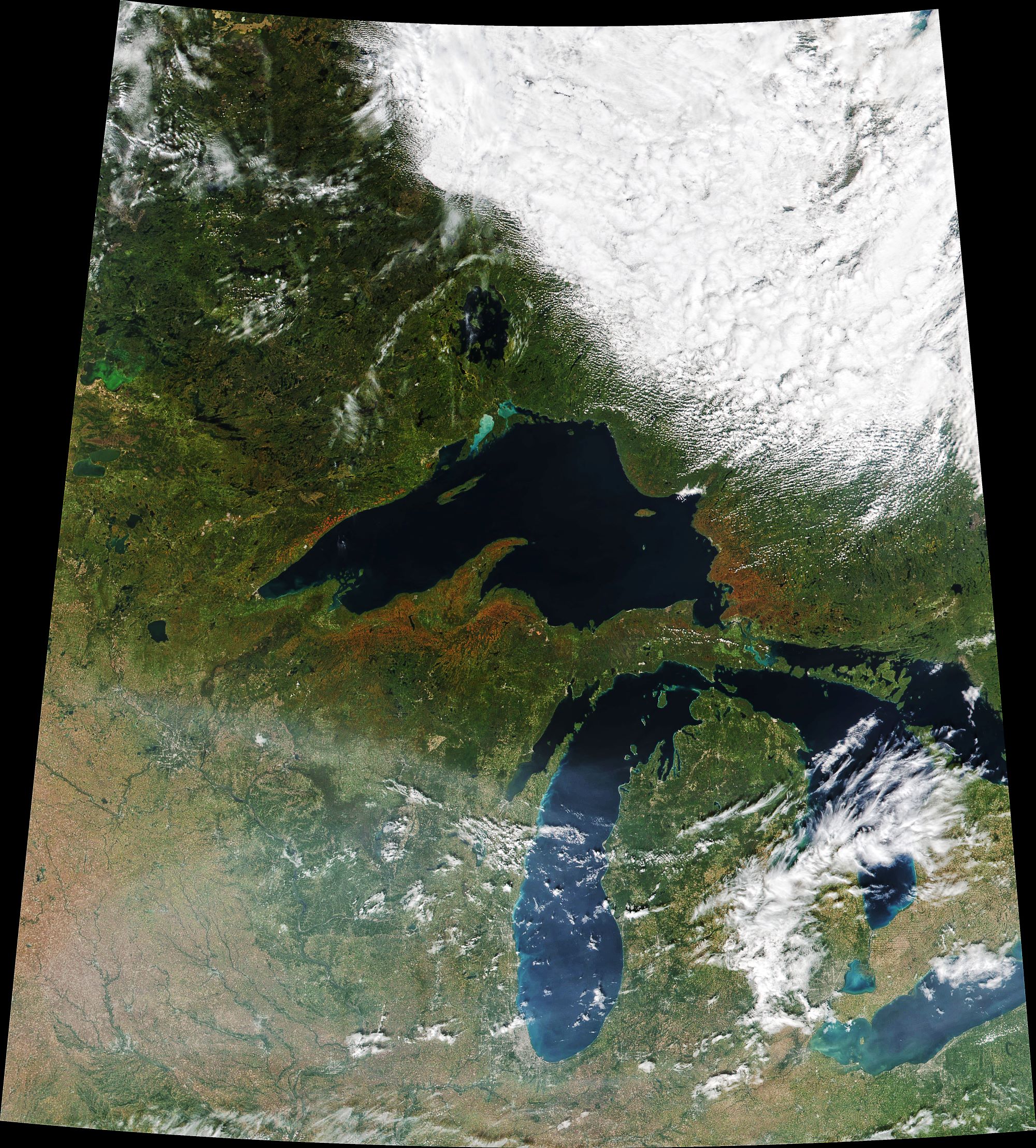[:ja]NASAの地球観測衛星NOAA-20が撮影したスペリオル湖の紅葉です。

米国の中で、ミネソタ州、ウィスコンシン州、ミシガン州は最初に紅葉が見られる地域で、この画像でもアスペン、樺、楓、アメリカボダイ樹などの落葉性の木々が生い茂るスペリオル湖周辺の紅葉が確認されます。紅葉は、主に落葉広葉樹が落葉の前に葉の色が変わる現象のことです。普段、葉が緑色に見えるのはクロロフィルが含まれるからですが、秋になり日照時間が短くなるとクロロフィルが分解され、これは植物学的には葉の老化反応と考えられています。夏の間、葉ではクロロフィルが光を吸収して活発に光合成が行われます。落葉樹の葉では、気象条件が光合成に適さない冬を迎える前に老化反応が起こります。この過程では光合成の装置などが分解されて、葉に蓄えられた栄養が幹へと回収されます。翌年の春にこの栄養は再利用されます。
地上の様子はこちらです。

参考文献: Superior Fall Colors (NASA Earth Observatory)
地球俯瞰画像を見る: LiVEARTH
[Earthview Wonders] No.1400: Superior Fall Colors🇺🇸
NASA’s NOAA-20 satellite captured the leaf reddening around Lake Superior.

Minnesota, Wisconsin, and Michigan are typically among the first parts of the U.S. to experience autumn color, and this image shows the the area around Lake Superior, which is rich with aspen, birch, maple, basswood, and other deciduous hardwood trees. In autumn, the leaves on deciduous trees change colors as they lose chlorophyll, the molecule that plants use to synthesize food. As green chlorophyll fades, other leaf pigments-carotenoids and anthocyanins-show off their colors. Carotenoids absorb blue-green and blue light, appearing yellow; anthocyanins absorb blue, blue-green, and green light, appearing red. As explained by the U.S. Forest Service, certain species of trees produce certain colors. Oaks generally turn red, brown, or russet; aspen and yellow-poplar turn golden. Maples differ by species. Red maple turns brilliant scarlet; sugar maple, orange-red; and black maple, yellow. Leaves of some trees, such as elms, simply become brown.
The local scenery on the ground is as follows.

Reference: Superior Fall Colors (NASA Earth Observatory)
See earthview photo gallery: LiVEARTH[:]